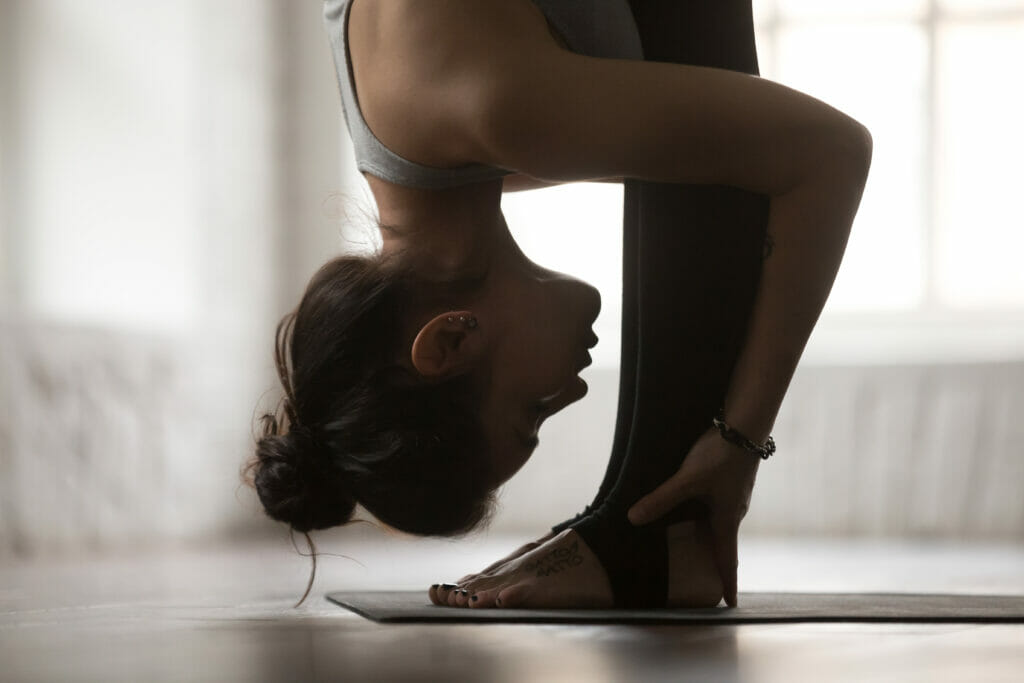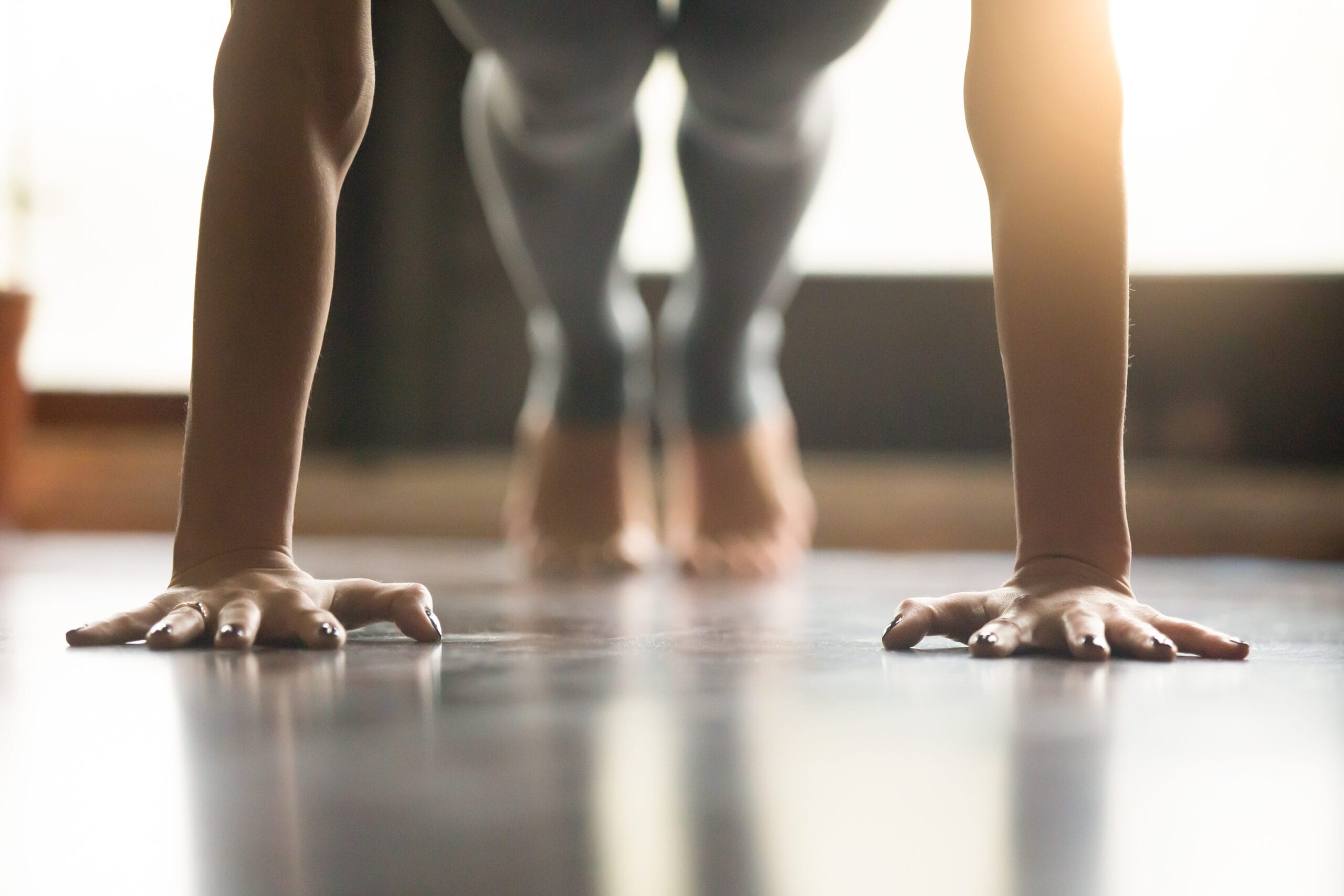
I’m gonna go out on a limb and guess that most of us aren’t stretching nearly enough – I know I’m not and a large part of my job is teaching people how to stretch therapeutically.
Which is unfortunate, considering how much better a lot of us would feel if we did spend a little more time stretching.
And this is especially true when it comes to the hamstrings.
Hamstring tightness can contribute to a lot of different common ailments, including back pain, hip pain, and knee pain, but luckily a little stretching can go a long way to help relieve these issues.
And there are many different ways to stretch your hamstrings – one stretch isn’t necessarily better than another, it’s all about finding ones that are comfortable for ya.
In this article, I’ll go over some of the easiest hamstring stretches out there, but before we dive in to the stretches themselves, I want to start with a quick anatomy lesson.
Hamstrings 101
The hamstrings are known as the muscles in the back of our thighs, but they actually consist of 3 different muscles: the biceps femuris, the semitendinosus, and the semimembranosus.
All 3 muscles start at our ischial tuberosity (the back part of our pelvis) and connect down to the top of our tibias (or the fibula in the case of the biceps femoris).
This means the hamstrings are used mostly for flexing, or bending our knee, but they also help extend our hips.
I mention all this because knowing where a muscle is and what it does makes it easier to stretch – stretching is essentially lengthening a muscle.
Since the hamstrings are located in the back of our thighs and function to bend our knees and extend our hips, this means we have to extend our knees and bend our hips to stretch them.
It also gives us an idea as to how having tight hamstrings can affect our backs, hips, and knees.
But why do so many of us have tight hamstrings to begin with?
Well, mostly because most of us don’t spend that much time with our knees extended and our hamstrings lengthened – most of us spend the majority of our days in the opposite position…
Sitting.
Yup, think about what position sitting in a chair puts our hamstrings in – with our knees bent to about 90 degrees, meaning our hamstrings are in a shortened position.
Sitting at a desk, driving, watching tv, all of these positions contribute to our hamstrings getting tight.
Turns out our muscles are good at adapting to how we use them, so it doesn’t take that long for them to tighten up.
Luckily, that means they can adapt to stretching and lengthen as well, it’s never too late to start stretching.
Ok, know that we have a little background info, let’s get to the stretches themselves.
5 Easy Hamstring Stretches To Help Improve Your Flexibility
1. Seated Hamstring Stretch
This is one of the most gentle hamstring stretches around because you get to sit in a comfortable chair while doing it, making this one of the best options for folks with achy joints or mobility issues.
And depending on how tight your hamstrings are, you might not even need an ottoman or stool – keeping your leg straight and resting on the floor might be enough.
With this stretch, try to keep your knee straight and gently lean into it from the hip (instead of rounding your back to lean forward).
Putting your foot up on an ottoman or stool will provide a little more stretch.
Aim for 3- 4 sets of 30 sec for each leg.
#2 Elevated Hamstring Stretch
Even though I don’t stretch that much, when I do stretch my hamstrings, this is the one I usually choose because I feel like it provides a great stretch.
Plus I have an ottoman in my attic for easy access when working out.
Anyway, for this variation, you need to find something to prop your foot up on – a chair, ottoman, stool, box, bench…pretty much any stationary object you can get a foot on.
This is basically the standing version of the stretch mentioned above.
Just keep in mind, the higher the object is, the more stretch you’re gonna feel.
Remember to keep that knee straight and always lean into it from the hip (keep your back straight).
And don’t be afraid to hold onto a wall or chair while performing this stretch – remember, it’s a stretch, not a balance exercise.
Again, holding for 30 sec is a good place to start, 3-4x each leg, alternating sides.
#3 Supine Hamstring Stretch
This is a nice hamstring stretch because you can do it lying down on a bed or couch, making it a safe variation for people who may be a fall risk.
This is also more of an active stretch, because your quads will have to work to straighten your knee, which might be quite the challenge depending on how tight you are.
Start by flexing one hip up to about 90° and placing both hands behind your knee.
Gently extend your knee, bringing your foot up toward the ceiling.
If you’re tight like I am, you won’t be able to straighten your knee completely, but that’s ok – trust me, you’ll still feel the stretch in your hamstrings.
I like to keep my hip in the 90° position regardless of how flexed my knee still is, but you could aways drop your hip a little too to get more knee extension.
Alternate sides.
P.S. – bringing your toes down toward you increases your stretch too.
#4 Modified Hurdler Stretch
I think this is one of those classic stretches we all probably had to do everyday in PE class – I know it was always one we had to do.
But you know what they say, the classics never go out of style.
This modified hurdler stretch is another comfortable way to stretch out your hamstrings from a seated position, although unlike the seated stretch above, for this one you have to be able to get on the floor.
The leg that you’re stretching will be extended out in front of ya, while the other is comfortable flexed with your foot resting on the straight leg’s thigh.
I call this a “modified” hurdler stretch because I think a real hurdler stretch has the opposite leg internally rotated in a position that looks really uncomfortable for us non-hurdlers.
Either way, this is another highly effective way to target the hamstrings.
#5 Crossed Leg Hamstring Stretch
This takes your classic standing hamstring stretch and adds a lit bit of a twist to it.
With this variation, you’re crossing one foot in front of the other before bending down like you’re trying to touch your toes.
You can cross one foot entirely across the other, like shown in the video, or you can place one foot directly in front of the other (tandem stance) and bend down.
I prefer the tandem foot position myself, but I couldn’t find a video of it to show.
Either way, crossing your legs like this adds a little variety to the stretch and it also hits the hamstrings a little differently than a purely straight leg position.
Remember – the biceps femoris connects a little more laterally at the top of the knee, while the semimembranosus/tendinosus connect more medially.
This means changing the position of your leg can target these different muscles a little throughout the stretch.
Just keep in mind that crossing your legs a little makes this stretch more difficult, so the really tight folks out there (like myself) may be really far from touching their toes on this one.
But that’s ok, it’s still a great stretch.
Final Thoughts
Most of us, especially the guys and older folks, have tight hamstrings and having tight hamstrings makes us more susceptible to low back and lower extremity pain.
But luckily, there are a ton of different ways to stretch our hamstrings, so we should all be able to find a comfortable way to stretch.
In a perfect world, we’d all stretch a little every day, but I know that’s unrealistic.
If you can include a few minutes of stretching 3x/week, you’re doing a lot better than most.
The above examples show that you can stretch your hamstrings in sitting, standing, and supine positions, but there are a bunch of other ways too.
You can use spotters and straps to help get more stretch as well.
Also, don’t feel like you have to include all of these stretches into your routine – maybe choose 1 or 2 and switch up which ones you use periodically.
With so many stretches to choose from, there’s no need to get bored.
Well, that about does it.
I hope you found this article helpful. If you have any questions or comments, leave ’em below and I’ll get right back to ya.


